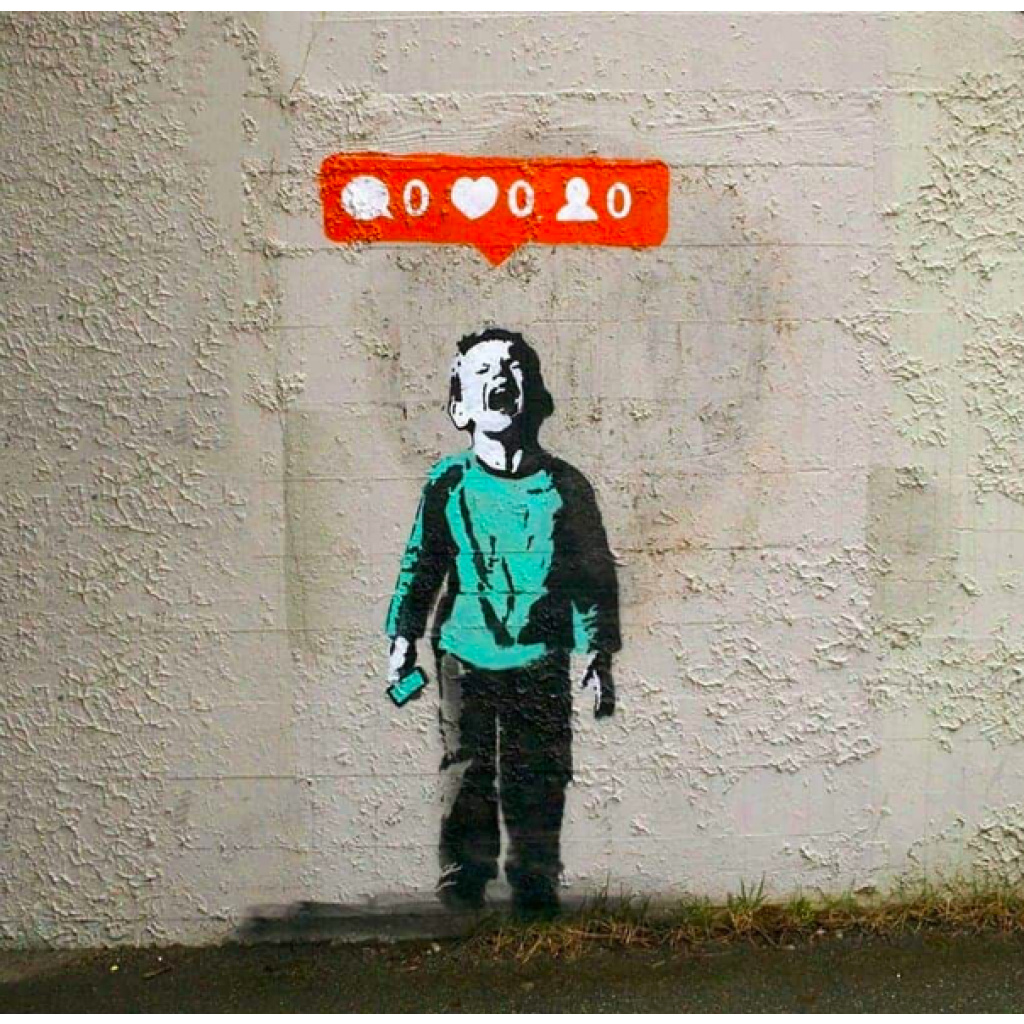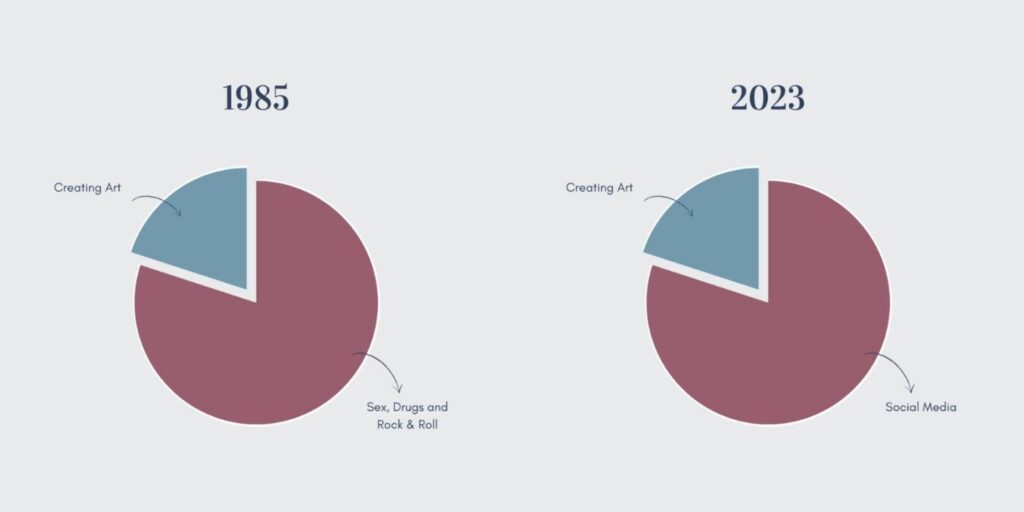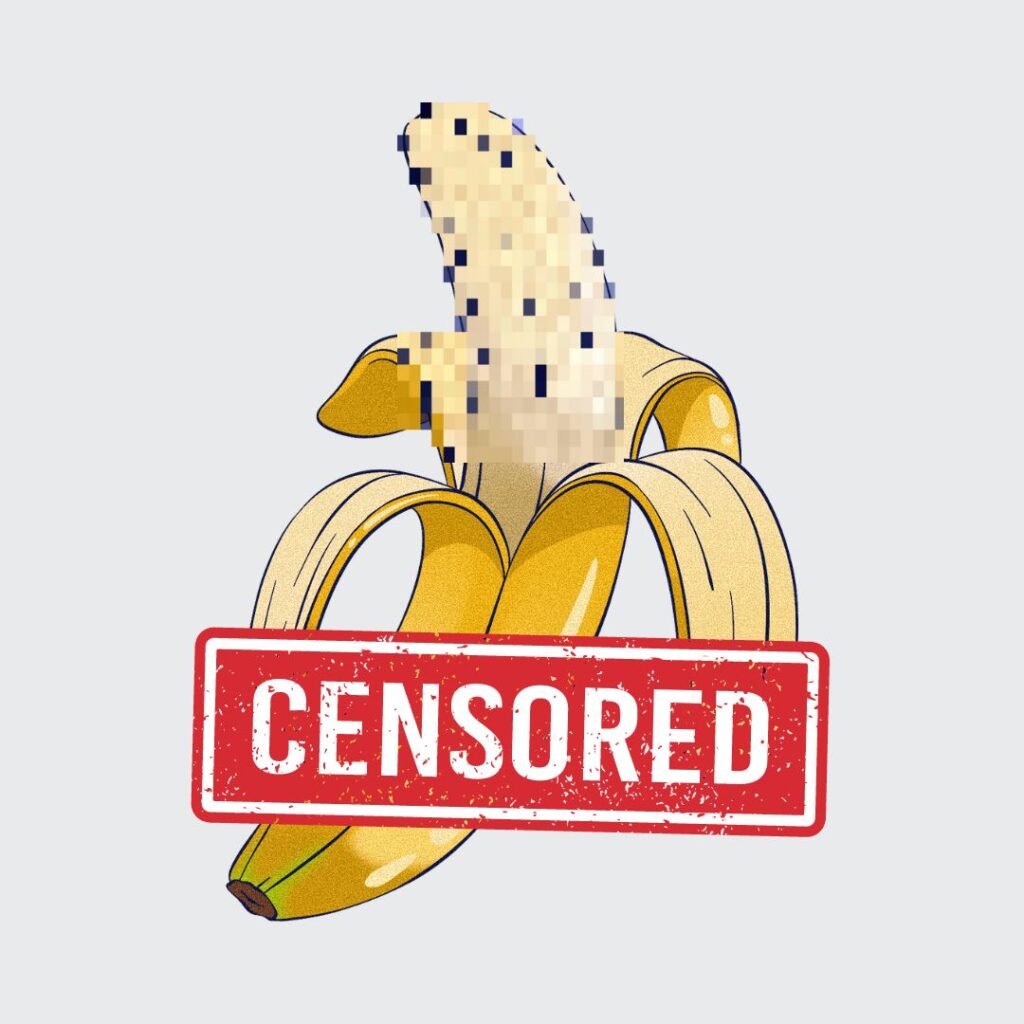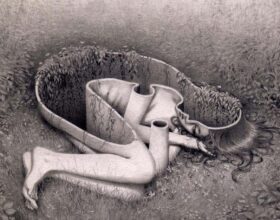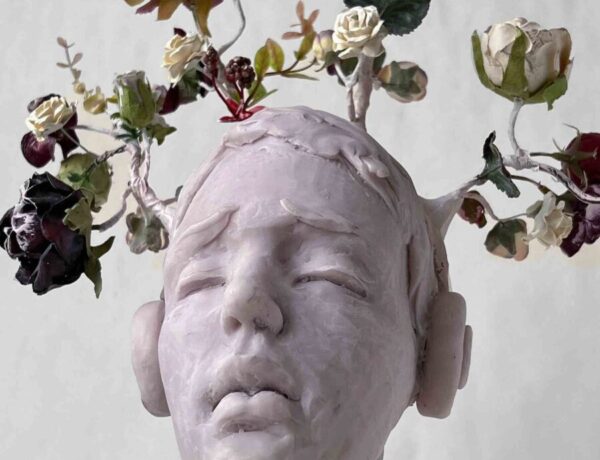The below article was originally published by Vicki Fox of Quirky Fox Gallery. We thank Vicki for sharing this content on the Beautiful Bizarre Magazine website – we agree with her views on how social media is impacting artists and the arts considering both the impacts of the algorithms and art censorship.
How Technology is Shaping the Visual Arts: Part I
Technological advances have always impacted the arts, from the earliest emergence of mass-produced pencils and paints to the most recent emergence of AI tools such as Midjourney and DALL-E.
While technology has helped the arts evolve, for some artists technology or at least some forms of technology is at a tipping point where it is hurting their mental health, their creativity and potentially their livelihoods.
Since the emergence of modern social media platforms such as Facebook, Instagram, Pinterest, Tumblr, and TikTok we have seen a difference in how the art world has been able to connect with other artists, galleries, curators, magazines, admirers and collectors. Despite bringing about many positive changes the negative impacts can not be overlooked.
Likewise, there is much debate about the ethics and role of AI art-generating tools and their impact on artists.
In this two-part series, we discuss how social media and AI art-generators are negatively impacting the art world. Part II: AI Art & the Ethical Concerns of Artists will be published next week.
Social Media and the Artist
Not so long ago the role of an artist was to create art. To create whatever they could envision within their skill set. Skills that constantly grew as they practiced.
Those that were marketable (and chose to), worked with galleries to sell their art. As their reputation grew and their art sold, their prices increased as did their representation and ability to sell. All while they continued to focus on creating and building a portfolio of work.
While this model had, and in some places still has, flaws (such as the under representation of minorities) it did allow artists to focus on creating. The grind of marketing, selling and connecting with clients was left to the gallery.
Now creating is not enough.
An artist has to be so much more than creative. They have to be constantly on show, feeding the ever-changing algorithms of social media.
While creating, they have to stop and record videos and photos, making sure they look as professional as possible with smooth transitions, careful lighting, well-chosen music and engaging commentary. For the emerging artist, money they would have previously spent on materials now go towards software or apps, props, the technology to capture high-resolution images and video, and boosting posts.
Artists are expected to share works in progress, completed works, their studio space and more. They need to field questions on pricing, shipping, availability and returns.
Artists are no longer sheltered from negative comments but exposed to everyone with a keyboard. And the bigger their personality, likability and willingness to expose themselves (both figuratively and literally), the more likely they are to gain followers and exposure.
Rather than creating works to sell, the modern artist needs to be a public relations and social media specialist. Precious creative time is cut into trying to figure out the magic formula of the right hashtags, music trends, filters and post time to catch the eye of someone who might, MIGHT, one day purchase a work or give a coveted like or follow.
It is exhausting!
Not only must time be spent doing this, even artists with masses of followers are finding it harder to share their work, needing to boost posts for even existing followers to see due to their reach being at the mercy of social media companies’ whims.
Many artists are seeing their reach decline, not even seen by their most loyal followers. Where once you could follow an artist or gallery to stay up to date with their offerings now you are more likely to see adverts and “suggested posts”.
Posts may be suppressed or shadow-banned without artists knowledge leaving them unable to appeal the decision. Some platforms will limit the reach of a post or account without the user’s knowledge harming their mental health and their business because the content doesn’t match the acceptable criteria of an algorithm.
Unfortunately, for many, their moods and creativity are directly influenced by the number of likes and comments, both negative and positive. Self-worth and confidence is often negatively impacted by the number of likes or followers received. And for those already struggling, it makes it easier to compare themselves, stifling their creativity and creating a self-fulfilling prophecy where they struggle to create, and have less content to share resulting in lower engagement and an increasingly negative feeling about their art.
In addition to the negative impact social media can have on self-esteem, social media’s guidelines and censorship also negatively impacts the creative freedom of artists. While landscape and abstract artists can share their work with ease, portrait artists must disfigure, crop or pixelate to meet “community guidelines”.
Nipples and pubic hair are the equivalent of, or worse than, violent crimes. Works not censored can result in restrictions, shadow bans or outright removal from platforms. Time spent building and creating a community can be erased for featuring a single nipple.
Think that sounds crazy? It’s happened to us. Multiple times. And to other art producers or supporters we know. For some it is outright bans, for others the more problematic shadow banning. Artists are expected to somehow alter their work to ensure that “female-presenting nipples” are not seen.
If you are a female creator or feature the female form in your work, the bias against sharing your work increases as discovered by The Guardian journalists Gianluca Mauro and Hilke Schellmann. The pair investigated the AI algorithms that analyse social media posts and decide what to amplify or suppress and found a gender bias: AIs censoring and suppressing the reach of images and photos featuring females. Images of women were consistently found to be more “racy” or sexually suggestive than comparative pictures of men, regardless of what they were doing or their state of dress, and their reach suppressed.
To show complete or works in progress of the naked or semi-naked female form without alteration, artists often find themselves appealing social media restrictions. These appeals tend to be judged by artificial intelligence (AI) rather than humans that can’t distinguish the context of the piece and have, as mentioned, a bias against female form. Artists are pitted against corporations that have no form of direct contact often leaving their appeals unanswered.

To partly overcome this, on 19 February 2023, Meta announced they were testing a new offering called ‘Meta Verified’. The so-called goal of this new subscription-based model is to offer “proactive account protection, access to account support, and increased visibility and reach” (Meta Newsroom, 19 Feb 2023). Yet this proposed introduction potentially has more detrimental effects than positive ones: firstly the verification will be subscription based requiring a minimum of USD11.99 per month on the web or USD14.99 on iOS or android – a minimum of USD143 a year. This will severely limit the reach of those at the start of their careers, with little disposable income and many minorities.
To be verified, subscribers and their content will have to meet Terms of Use and Community Guidelines reinforcing the need to censor nudes. The verification terms and conditions at this stage will only support the real name on your profile, limiting those who use a pseudonym for their art and businesses are not eligible which may limit the ability of artists to use Facebook or Instagram to sell their work.
While social media has allowed artists not traditionally seen to gain recognition and connect with others, it has also put pressure on some of the most talented and vulnerable.
Left to the algorithms and fickleness of likes, follows and engagement, some artists end up with a distorted view of their ability and struggle to find the joy that lead them to create.
In the second part of this post, we discuss the impact of AI on visual arts.
Featured Image by ihatestencils


